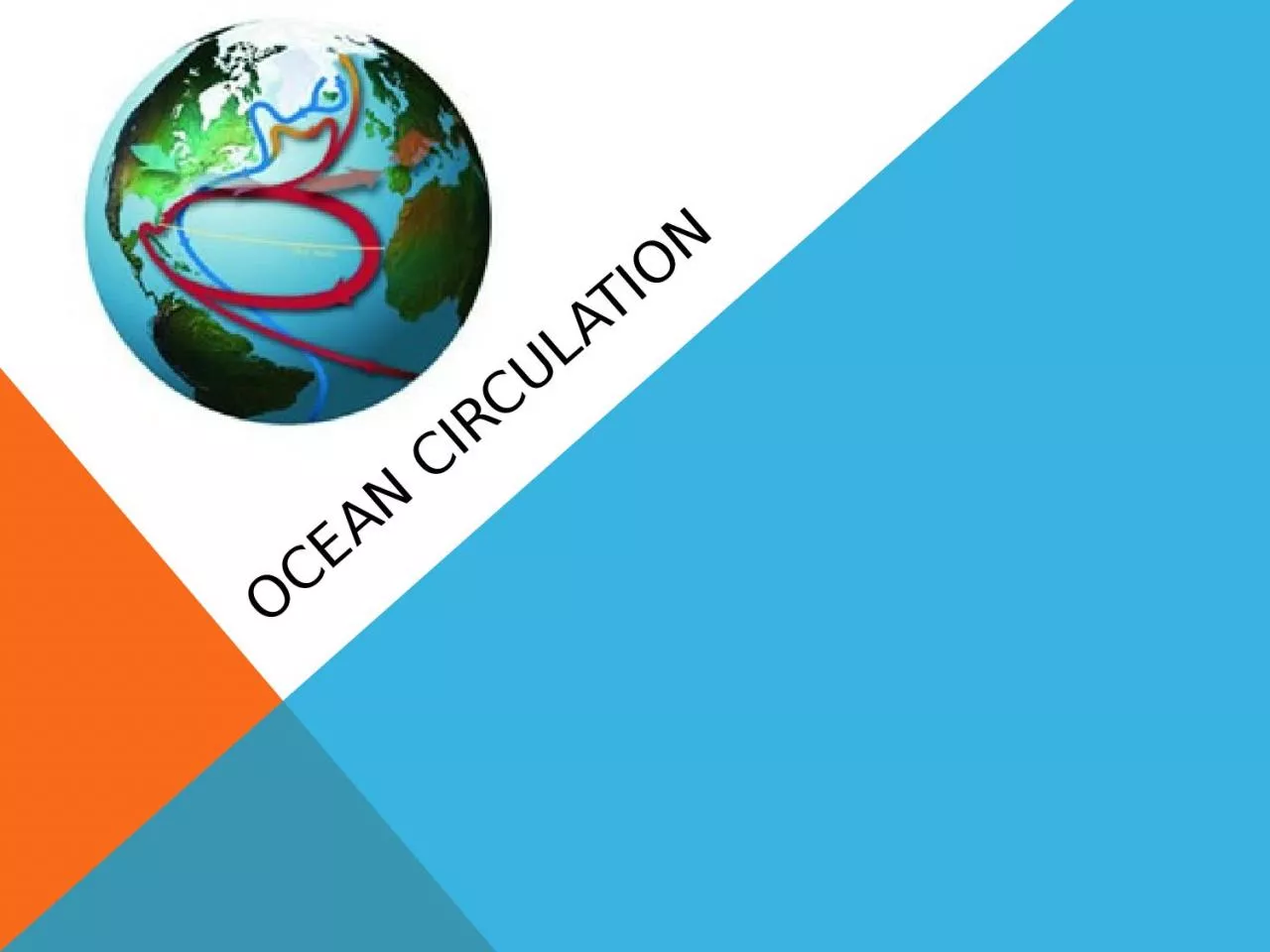

EFFECT OF TEMP gt EFFECT OF SALINITY OCEAN LAYERS SURFACE MIXED ZONE less dense upper ocean temp and salinity change often TRANSITION ZONE fairly constant density acts as barrier between surface and deep zones ID: 1022203
Download Presentation The PPT/PDF document "OCEAN CIRCULATION Density of seawater" is the property of its rightful owner. Permission is granted to download and print the materials on this web site for personal, non-commercial use only, and to display it on your personal computer provided you do not modify the materials and that you retain all copyright notices contained in the materials. By downloading content from our website, you accept the terms of this agreement.
1. OCEAN CIRCULATION
2. Density of seawaterEFFECT OF TEMP > EFFECT OF SALINITY
3. OCEAN LAYERSSURFACE MIXED ZONE – less dense upper ocean, temp and salinity change oftenTRANSITION ZONE – fairly constant density, acts as barrier between surface and deep zones - PYCNOCLINE – rapid density change in water column - THERMOCLINE – rapid temp change in water columnDEEP ZONE – water remains cold and denseTransition
4.
5. THERMOHALINE CIRCULATION Movement of masses of ocean water driven by density gradients due to surface heat and freshwater input
6. SURFACE CURRENTSGYRES – large systems of spinning currents caused by the Coriolis effect
7. CORIOLIS EFFECT
8. Ekman transportAn Ekman spiral (A) is a rotating column of water that forms when water moves at an angle to the wind direction due to the Coriolis Effect. The net effect of the rotating water (B) is movement at 90° to wind direction. Water turns to the right in NH, and to the left in SH.
9. UPWELLING & DOWNWELLING
10. Atmospheric circulationhttp://www.ux1.eiu.edu/~cfjps/1400/circulation.html